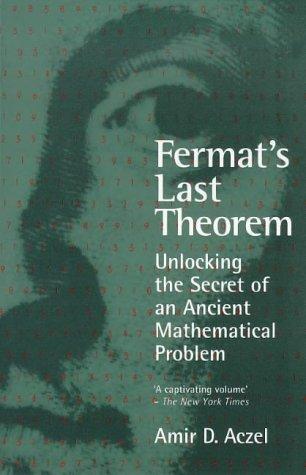Fermat'S Last Theorem: Unlocking The Secret Of An Ancient Mat
11,52 €
Laos
Tarneaeg:
2-3 päeva
Tootekood
9780140267082
Description: Shortlisted for Rhone Poulenc General Prize for Science Books 1998.
Around 1637, the French mathematician Pierre de Fermat wrote that he had found a way to prove a seemingly simple statement: while many square numbers can be broken down into the sum of two other squares - for example, 25 (five squared) equals nine (three squared) plus 16 (four squared) - the same can never be done fo...
Description: Shortlisted for Rhone Poulenc General Prize for Science Books 1998.
Around 1637, the French mathematician Pierre de Fermat wrote that he had found a way to prove a seemingly simple statement: while many square numbers can be broken down into the sum of two other squares - for example, 25 (five squared) equals nine (three squared) plus 16 (four squared) - the same can never be done for cubes or any higher powers. This book provides an account of how Fermat's solution was lost, the consequent strug
| Autor | Aczel, Amir D. |
|---|---|
| Ilmumisaeg | 1998 |
| Kirjastus | Penguin Books Ltd |
| Köide | Pehmekaaneline |
| Bestseller | Ei |
| Lehekülgede arv | 160 |
| Pikkus | 198 |
| Laius | 128 |
| Keel | English |
Anna oma hinnang
